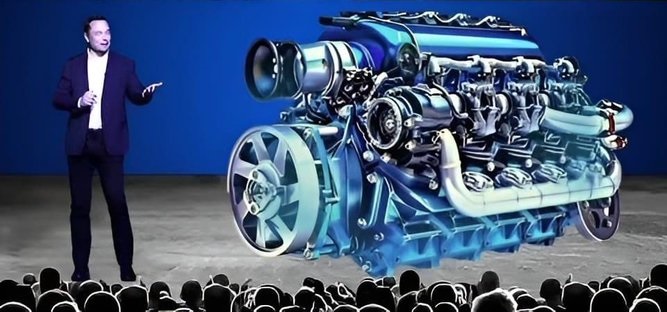In a groundbreaking announcement, Elon Musk has unveiled a revolutionary new water engine that promises to transform the future of transportation and energy. After years of skepticism and countless innovations, Musk’s latest venture sets the stage for unprecedented environmental sustainability. But as the world marvels at this so-called “innovation,” questions arise: What makes this water engine so unique, and how much of it is truly new? Is it fair to credit Musk with a breakthrough that echoes the tragic history of earlier inventors like Stanley Meyers, who was silenced for similar discoveries decades ago?
The Controversial History of the Water Engine
Before diving into Musk’s latest endeavor, it’s essential to recognize the shadowy history surrounding water engine technology. Stanley Meyers, an American inventor, made headlines in the 1970s when he claimed to have developed a water-powered car. Meyers’ invention supposedly used a process called electrolysis to split water molecules into hydrogen and oxygen, which would then power a vehicle. His claims were met with skepticism, and Meyers faced immense pressure from powerful entities, most notably the oil industry. Tragically, Meyers died under mysterious circumstances, fueling speculation that his invention was suppressed and that he was murdered to protect the interests of big oil.

The water engine concept has resurfaced multiple times since Meyers’ death, with companies like Toyota exploring similar technologies. However, each time, the innovations seemed to vanish, leading many to believe that the technology was being deliberately suppressed. One North American company reportedly had water engine technology ready for market in 2009, but it never materialized.
Musk’s Water Engine: Innovation or Rebranding?
Elon Musk’s announcement of a “water engine” has sparked excitement, but also skepticism. Is this truly a groundbreaking innovation, or is it merely a rebranding of existing technology that has been kept under wraps for decades? The truth may be more complex.
First, it’s important to clarify that Musk’s water engine is not a literal “water engine” in the traditional sense. Rather, it appears to be an advanced electric vehicle powered by a hydrogen fuel cell, which generates electricity through a reaction between hydrogen and oxygen, with water as the byproduct. This technology, while impressive, is not new. Hydrogen fuel cells have been in development for years, and several companies, including Toyota, have already introduced fuel cell vehicles to the market.
The Dark Side of Innovation
The darker side of this story is the repeated suppression of water engine technology. The man who originally held the patent for a water engine was allegedly killed by big oil interests, and his family was reportedly intimidated into selling the patent. After being shelved for nearly 30 years, the patent has finally expired, allowing new players like Musk to capitalize on the technology. The timing raises questions about whether this is truly an innovation or simply a case of patent limitations allowing for “generic brands” of an old idea.
Musk’s involvement, however, has reignited public interest in the potential of water-based technology to revolutionize energy and transportation. The tech mogul’s reputation for pushing boundaries and challenging the status quo gives hope that this time, the water engine—or its modern equivalent—might finally have its day in the sun.
Implications for the Future
If Musk’s water engine can overcome the challenges that have plagued similar technologies in the past, it could have far-reaching implications for the future of energy and transportation. The environmental benefits are obvious: a shift from fossil fuels to hydrogen fuel cells could drastically reduce greenhouse gas emissions and our dependence on non-renewable resources.
However, the road ahead is fraught with obstacles. The same powerful interests that allegedly silenced Stanley Meyers still hold significant influence today. Moreover, the infrastructure needed to support hydrogen fuel cells—such as hydrogen refueling stations—is still in its infancy. Without widespread support and adoption, this technology could once again be relegated to the fringes of innovation.
Conclusion: A Cautious Optimism
While Elon Musk’s announcement is undoubtedly exciting, it’s crucial to approach it with a sense of cautious optimism. The history of water engine technology is riddled with controversy, and many questions remain unanswered. Will Musk’s venture succeed where others have failed? Will this technology be allowed to flourish, or will it be stifled once again by powerful interests?
As we look to the future, it’s important to give credit where it’s due. Stanley Meyers may not have had the backing of a billionaire tech mogul, but his pioneering work laid the foundation for what could become one of the most transformative technologies of our time. Let’s hope that this time, the water engine will finally have the chance to make the impact it was always meant to.

For more on the legacy of suppressed technologies and how they shape our future, visit Beautiful People Magazine. to see similar articles.






